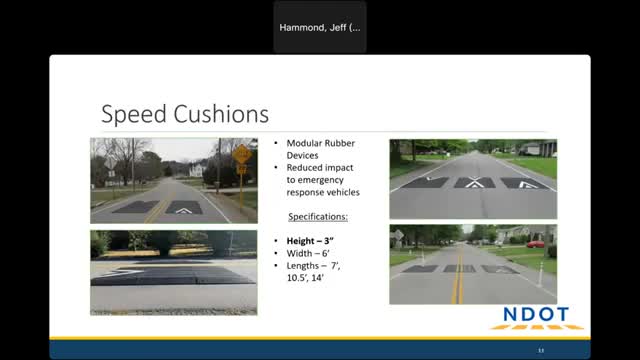Speed Cushions Revolutionize Traffic Calming Strategies
December 04, 2024 | Nashville Department of Transportation (NDOT) Meetings, Nashville, Davidson County, Tennessee
Thanks to Scribe from Workplace AI , all articles about Tennessee are free for you to enjoy throughout 2025!

This article was created by AI using a video recording of the meeting. It summarizes the key points discussed, but for full details and context, please refer to the video of the full meeting. Link to Full Meeting
The layout of speed cushions is carefully planned to cover the entire width of the road. This design prevents drivers from easily maneuvering around them. Depending on the road's width, officials may place two, three, or more cushions side by side. However, breaks are intentionally included in the cushions to allow emergency vehicles, like fire trucks and ambulances, to navigate the streets with minimal disruption.
Speed cushions are about three inches tall and vary in length from seven to fourteen feet. The shorter cushions, typically found in urban areas, are designed to slow down traffic more effectively. In contrast, the longer cushions are used in rural areas where higher speeds are common. This strategic placement helps manage traffic flow while ensuring that emergency services can operate efficiently.
Converted from 9/23/24 Morton Avenue Traffic Calming Meeting meeting on December 04, 2024
Link to Full Meeting
Comments
View full meeting
This article is based on a recent meeting—watch the full video and explore the complete transcript for deeper insights into the discussion.
View full meeting
